#second temple
Text
Wait a minute...I've seen this name before...

(The Book of Jubilees is a Jewish religious work that was influential in its day but is not considered canon in either Christianity or Judiasm outside of Ethiopian Communities)
#azura#azura fire emblem#azura fe#toh azura#good witch azura#the owl house#owl house#luz noceda#toh luz#amity blight#toh amity#apocrypha#jewish apocrypha#judiasm#second temple#christianity#adam and eve#the bible#jubilee#ethiopia#ethiopian jews#ethiopian orthodox
27 notes
·
View notes
Text

27 notes
·
View notes
Text

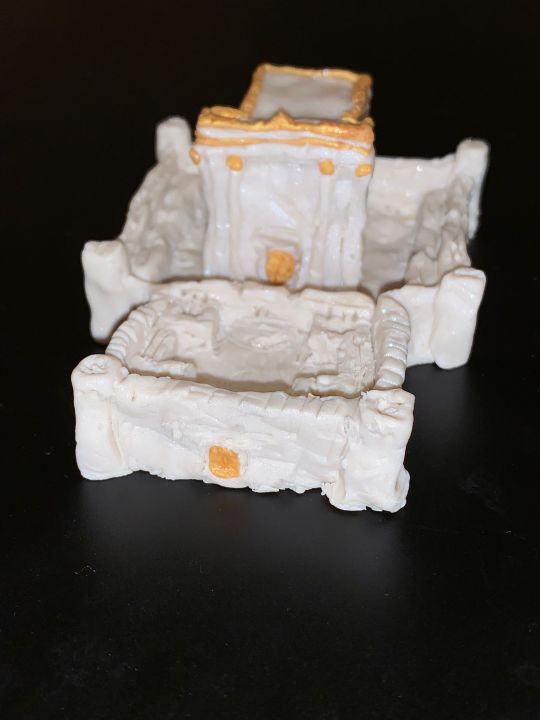



Sculpey Second Temple
Got stoned last night after studying I Kings and reading up on Solomon's Temple and Herod's Temple and between that and the general Chanukah Spirit I made a little Second Temple and another seven branch menorah.
Remembered to include something for scale this time so chapstick for scale.
#jewish art#jewish#second temple#jewish artist#jewish artists#jumblr#sculpey#art#my art#chanukah#hanukkah
38 notes
·
View notes
Text

1 Elul - Second Temple, Take -Two - 353 BCE
On this day in 353 BCE, the prophets Chagai and Zecharia prophesied that Zrubavel should continue the building of the second temple in Jerusalem. The second commonwealth of Israel had very difficult beginnings. Already in the year 371 BCE, King Cyrus of Persia (who controlled Israel) permitted the Jews to return to Israel and rebuild their Temple. Zerubavel, a descendant of King David and the presumptive monarch, led 40,000 Jews back to Israel. Most of the Jews stayed in Babylon. The Jews that returned began building the Temple immediately.
After the Jews were sent into the Babylonian exile, the Samaritans filled the land of Israel, and they were not willing to give up their homes based on ancestral claims (sound familiar). They appealed to King Cyrus to withdraw his authorization, and he acquiesced. Then, the Purim story happened. Esther became queen of Persia. She and Achashversoh had a son Darius II. He succeeded his father as King of Persia. He would give the blessing for the Jews to continue building their Temple in Israel, but the Samaritans would continue to be a thorn in the side of the Jews for another 20 years.
The settlement would still have its challenges. Ezra would come with a small group in 348 BCE. The majority would remain in Babylon. He established the Anshei Kenesses HaGedolah as the governing body. It wouldn’t be until Nechemia would come in 335 BCE that the fledgling country would finally find some stability, and begin to thrive.
Rabbi Pinchas L. Landis
25 notes
·
View notes
Text
youtube
In this special one-off video I try out Gate Zero, a Christian bible game and my first ever time trying out a Christian game! I travel back in time to Jerusalem in the year 33AD. I have a look around the Temple Mount, dodge some Roman soldiers and become ordained into the priesthood so I can get access to the Jewish temple!
This demo taxed my computer while recording and running it, sorry for the low FPS, I will be interested to play the full version once it comes out and once I've got a new PC.
Gate Zero is developed by Bible X Games and published by BCC Media.
Please visit 'Israel My Channel' on YouTube for videos on Jerusalem and the Temple Mount!: https://www.youtube.com/@IsraelMyChannel
#youtuber#youtube#gaming#pc gaming#pc games#small youtuber#Gate Zero#Christianity#Bible#Second Temple#Jerusalem#Herod's Temple#Bible X Games#Western Wall#Youtube
2 notes
·
View notes
Photo


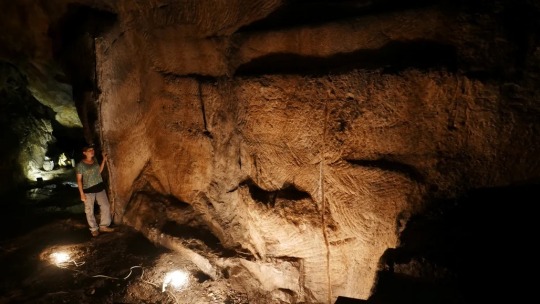
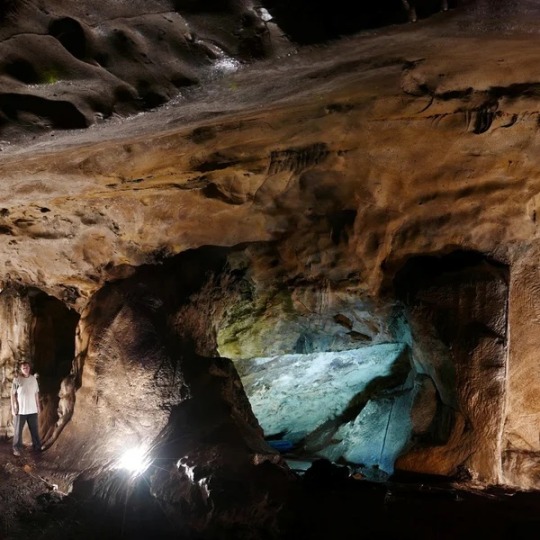
Archaeologists Find Source of Stone for King Herod’s Bathtubs
The assumption had been that the alabaster for the royal hygienic furnishings and other artifacts in Second Temple-period Judea was Egypt. Not so, analysis at Bar-Ilan University finds.
“And now Herod, in the eighteenth year of his reign, and after the acts already mentioned, undertook a very great work; that is to build of himself the temple of God.” – Antiquities of the Jews, Josephus, XV Chapter 11
King Herod, the vassal king appointed by the Romans in 40 B.C.E. to rule Judea on their behalf, famously had a mania for colossal construction projects. Most famously, he redid the temple in Jerusalem, creating the reportedly magnificent second Second Temple after apparently deciding that the first Second Temple wasn’t grand enough. He is credited with building the palatial fortress at Masada, the port of Caesarea Maritima, palaces for himself (and his bonsai collection?), and in fact entire cities during his reign in the second half of the first century B.C.E.
Herod’s edifices were accoutered magnificently, using the finest materials, such as marble shipped over from Italy. Having been a seabed many millions of years ago, Israel now has abundant chalkstones of various types such as cheapo gypsum, but not marble, certainly not of the quality the king wanted for his ports, palaces and the great temple itself.
Nor was Israel thought to have the beautiful white calcite alabaster from which Herod’s bathtubs and many other artifacts, from cups to pillars, were fashioned.
Which leads to the latest revelation, published by Dr. Ayala Amir of Bar-Ilan University, with Prof. Aren Maeir, Prof. Boaz Zissu and Prof. Amis Frumkin of the Hebrew University in the Nature journal Scientific Reports Herod would, of course, have wished for the finest alabaster for the greater glory of God and/or himself. The assumption had been that he obtained calcite alabaster for his bath facilities from Egypt, a key source of this soft stone in antiquity.
Supporting that contention, no calcite alabaster quarries had been found in Israel. Until they were, Amir explains.
“Until a few years ago, we knew of no alabaster quarries in Israel and in Egypt there’s a ton,” Amir says. “So there had been a clear understanding that anything made of alabaster calcite had to have been imported from Egypt.” In fact, this importation of alabaster from Egypt began all the way back in the Bronze Age, she says; and it influenced the local alabaster plaster industry.
Yet in recent years, two quarries for calcite alabaster have been found, one in Te’omim Cave and the other in Abud Cave, both in central Israel, not far from Beit Shemesh. Thus the question arose: was Herod importing alabaster from Egypt, or using the local stone? Was the local rock even fine enough for his discriminating taste? In short: Was the assumption that he imported it from Egypt correct?
As far as his bathtubs were concerned, it is incorrect. Herod the Great’s royal tubs, one found decades ago in the Kypros fortress and one recently discovered in the palace of Herodium, both just south of Jerusalem, were made of stone quarried in Israel, not in Egypt.
Analysis has demonstrated that they were his personal tubs, the team writes. Why did Herod have bathtubs, anyway? Because he sought to introduce Roman cultural norms to Judea, including Roman bathing culture, a habit recently demonstrated to have led the ancient Romans to share not only bathwater, but also parasites.
Anyway, asked when the local quarries that produced Herod’s tubs were operative, Amir explains that the one in Te’omim Cave operated from the Middle Bronze Age to the early Roman period.
Only the tubs? Not at all. “Additional things were checked that also turned out to be local,” Prof. Maeir confirmed – and the team will be in touch about it in due time.
In one of those twists, the researchers were given samples from the Temple Mount to check the source of the alabaster, but these turned out to be marble, Amir says. Yes, there are objects in ancient Israel that were made of alabaster imported from Egypt, she confirms.
It bears adding that all along, archaeologists have assumed that while fine alabaster projects were made of Egyptian stone, it was clearer that poorer quality vessels around the Levant were made of local gypsum. Herod would not have abided tacky materials in his great works, as Josephus says regarding the temple project: “…as esteeming it to be the most glorious of all his actions, as it really was, to bring it to perfection; and that this would be sufficient for an everlasting memorial of him,” which explains a great deal.
“Herod built in all sorts of places around Israel, and in Jordan. There are even historic sources saying he built in Turkey,” Prof. Maeir says. “He was a local king, but an important one. The Romans were his patrons, but he was an important client.”
Asked why Herod, ruling from Jerusalem, would build in Turkey, Maeir explains that kings of the time built partly in order to aggrandize themselves – for instance, they would build a monument for a temple or a foreign city.
The research method involved analyzing ancient and modern alabaster samples from Egypt and Israel, and analyzing Herod’s tubs and other objects. The ancient Egyptian samples were obtained courtesy of the Kunsthistorisches Museum in Vienna, Austria, the team notes: they had been collected by the Austrian archaeological expedition to Giza in the 19th century. The modern Egyptian sample was bought in a Cairene shop. The various calcite-alabaster samples from Israel and Egypt were analyzed with the assistance of Prof. Gil Goobes and Prof. Amnon Albeck of Bar-Ilan University, using four analytic methods.
“All four analytical methods applied in the study provided consistent results, clearly distinguishing the Israeli from the Egyptian calcite-alabaster for the first time,” Albeck said.
The conclusion, says Prof. Maeir, is that the Judean calcite-alabaster industry in the second half of the first century B.C.E. was sufficiently developed and producing stone of sufficient quality to meet Herod’s standards. And whether or not he actually completed some of the projects ascribed to him, which is debated – those standards were very high.
By Ruth Schuster,
#Archaeologists Find Source of Stone for King Herod’s Bathtubs#archeology#archeolgst#ancient artifacts#second temple#history#history news#ancient history#ancient culture#ancient civilizations#roman history#egyptian history#israel history
36 notes
·
View notes
Text
That should do it, Dickbag.
Love you too Lord.
youtube
#Conversations with God#Morpheus#FRUIT#ROSE#Zion#Resurrection#New Jerusalem#Second Temple#Youtube#ISRAEL
0 notes
Text
Pseudepigrapha
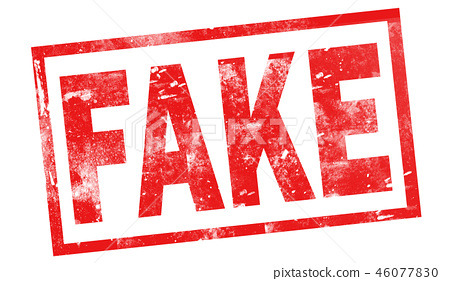
View On WordPress
#Books#Characteristics#Controversies#Evil#False teaching#Hellenistic#Historical#Jewish#Judaism#Origins#Pseudpigrapha#Second Temple#Tradition
0 notes
Text
#7 The Ark of the Covenant
Mary living at the Temple is linked to her being symbolically the ‘Ark of the New Covenant’. Assumption is a belief connected not only to people, but also to the Ark of the Covenant.
The Ark of the Covenant was a wooden case covered with pure gold. The lid was elaborately designed with two cherubim. God spoke to Moses from between the two cherubim on the Ark’s cover. Inside it contained the…
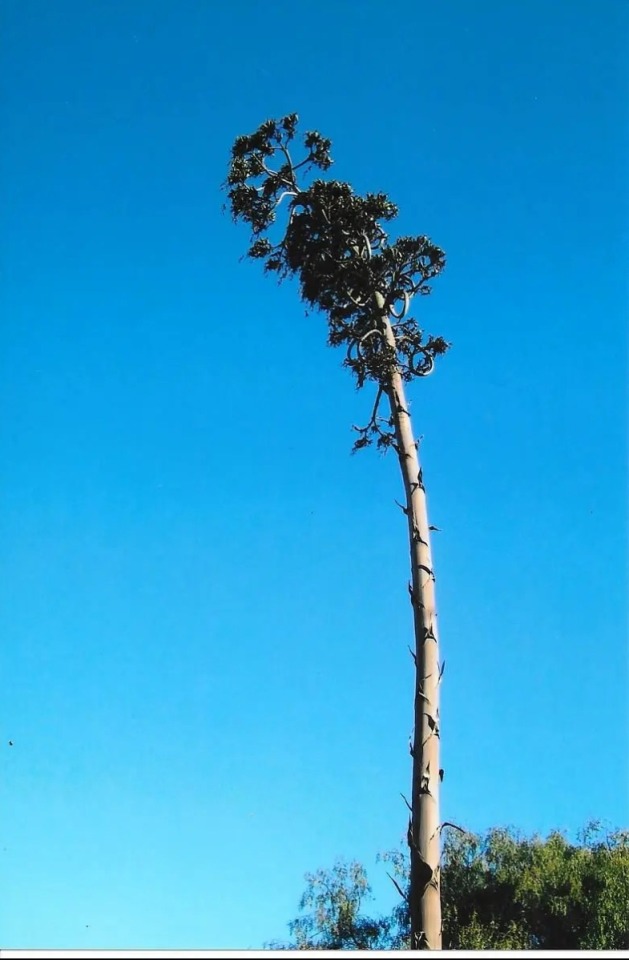
View On WordPress
0 notes
Text
Le temple et la gloire du temple
Le temple et la gloire du temple
audio, citations
youtube
View On WordPress
#Église juive#église de Dieu#cérémonies#Icabod#la gloire du temple#premier temple#second temple#Shékinah#Youtube
0 notes
Text
The Book of Ezra
The Book of Ezra
The_Rebuilding_of_the_Temple_Is_BegunGustave Doré (1866)
The book of Ezra is listed among the historical books of the Old Testament. There are twelve books listed among the historical books of the Old Testament: Joshua, Judges, Ruth, 1 and 2 Samuel, 1 and 2 Kings, 1 and 2 Chronicles, Ezra, Nehemiah, and Esther.
In the Hebrew Bible, Ezra is listed among the Kethuvim or the Writings. The last three…
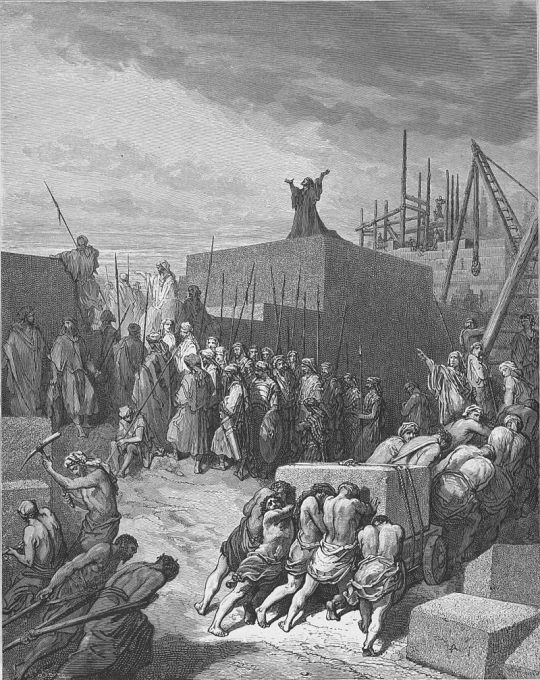
View On WordPress
0 notes
Text
Aerial view of Jerusalem’s upper aqueduct. Courtesy Emil Aladjem, IAA.
During the late Second Temple period, during the time of the Herodian dynasty and Jesus of Nazareth, Jerusalem boasted one of the world’s largest and most elaborate aqueduct systems. While carrying out a salvage excavation in Jerusalem’s Givat Hamatos neighborhood, the Israel Antiquities Authority (IAA) uncovered over 1,000 feet of the city’s upper aqueduct, the longest segment yet discovered, revealing new clues about the ancient structure.
Water for Jerusalem
The upper aqueduct of Second Temple Jerusalem was one of two aqueducts that delivered water to the city. While the lower aqueduct delivered water to the Temple Mount, the upper aqueduct—as the name implies—brought water to the upper city, which was the area of Herod’s palace and the place where the city’s wealthiest residents lived.
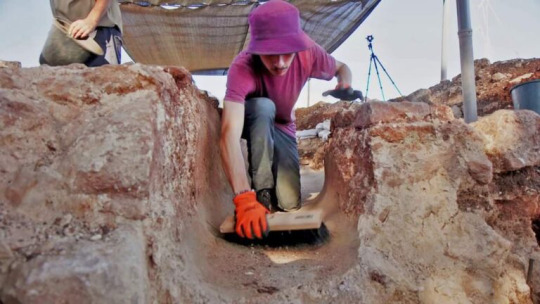
Excavator cleaning up the upper aqueduct. Courtesy Emil Aladjem, IAA.
“At the end of the Second Temple period, Jerusalem grew significantly: The Temple was rebuilt and the water that flowed from the Gihon Spring and the cisterns was no longer enough for the thousands of pilgrims and residents, and water had to be brought to the city from far away,” said Opher Shiyan and Rotem Cohen, co-directors of the excavation in an IAA statement. “Against this background, the Hasmoneans and King Herod built two elaborate aqueducts for Jerusalem, which were among the largest and most complex waterworks in the Land of Israel and the ancient world in general. The aqueducts concentrated spring water in the Bethlehem area and, with the help of huge pools and the force of gravity, made the water flow for tens of miles.”
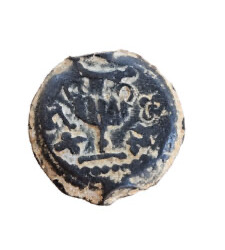
Revolt coin discovered in the Jerusalem aqueduct. Courtesy Emil Aladjem, IAA.
The upper aqueduct continued to be used even after the destruction of Jerusalem in 70 CE and was the primary water source for the Roman city, Aelia Capitolina. The lower aqueduct, however, remained in use for far longer, even into the early 20th century.
During their excavation, the team identified three phases of the aqueduct’s use, with the earliest dating to the Second Temple period and the latest to the time of the city’s Roman occupation. The team also discovered 25 coins within the plaster that covered the aqueduct’s walls. The excavators suggest the coins were placed intentionally, perhaps as tokens for good luck, as they were found at nearly identical distances from each other.
It is still unclear whether the aqueduct system was first built by the Hasmoneans or by Herod the Great. Recent evidence suggests at least some sections were built later, possibly under the auspices of Pontius Pilate. The archaeological team hopes that the newly discovered coins can finally answer questions about the aqueduct’s origin and date.
13 notes
·
View notes
Text
The Magdala Stone
Scholars are still studying and thinking about the meaning of the Magdala Stone. As I searched for explanations, I turned to the Biblical Archaeology Society's article written in 2021, as well as a few other sources. #MagdalaStone #Bimah #SecondTemple
David and I are once again in Israel, the “Beautiful Land,” as the prophet Daniel described it.
In the heart of the town of Magdala stood its main synagogue with a mysterious sacred stone standing in the midst of its sanctuary. Discovered in 2009, this stone has depths to it that researchers are still searching out.
Symbol of the Temple
Scholars are still studying and thinking about the…

View On WordPress
#bimah#exeviel#ezekiel 1#ezekiel&039;s vision#Magdala#Second Temple#synagogue#the magdala stone#wheel in a wheel#Widow&039;s Mite
0 notes
Photo

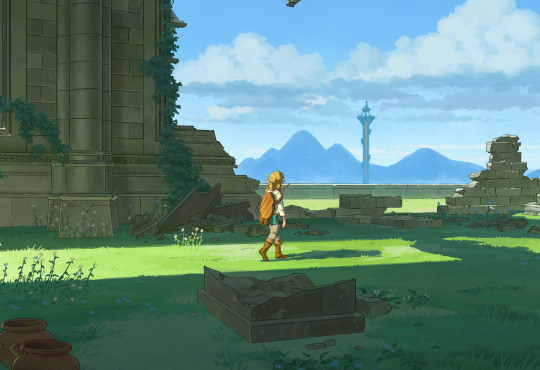
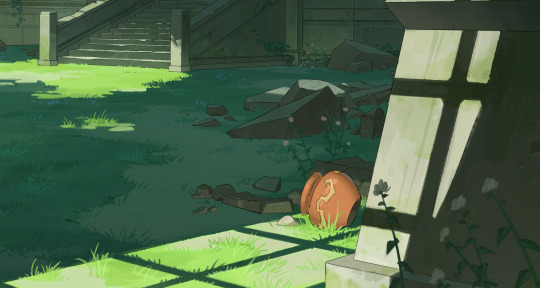

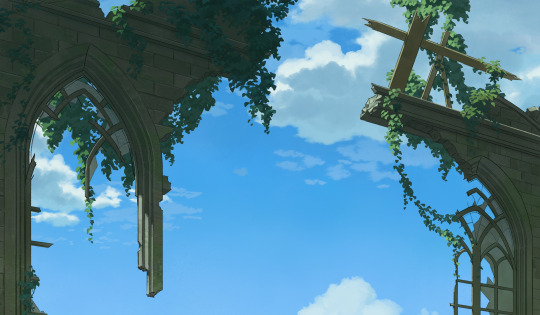
I finally finished this painting!!
#my art#botw#breath of the wild#could also be totk haha#but not really because I noticed they changed the grass/foliage on the ground#so that means I need to spend another couple years working on a second temple of time painting#just so I can paint the new ground foliage lol#...I actually wanted to take another shot at this location if you can believe it#the rest of my life will be painting the temple of time
2K notes
·
View notes
Text
jews: hey so this word is so important that historically it was only ever said once a year on the holiest day of the year and only by one guy. this tradition stopped after the fall of the second temple and everybody has forgotten how to pronounce it, and it's been deemed unpronounceable. now, we use a word to replace it, but you're not allowed to say it outside of prayer or reading torah aloud. any printed material that has it written must be buried in a graveyard like a human, it can't simply be thrown out
christians: *treat the word like a fucking trivia question, have songs that just mispronounce say it on repeat for the entire chorus, make shitty ugly ass earrings with the word written on it, include the word in fun translation exercises like it's just like any other word*
#and christians wonder why i'm so uncomfortable around them#also that one guy before the fall of the second temple that said it did so as a part of a ritual that was deemed so dangerous people would#literally tie a string around him in case he died so they could pull him out without going in after him#anyway my biblical hebrew class starts tomorrow and the textbook was made by a bunch of evangelicals and it has the shem hashem and so many#other words that make me physically uncomfortable to have just sitting in a textbook#jumblr#christian antisemitism#antisemitism tw#judaism#jewish history#jewish culture
1K notes
·
View notes
Text

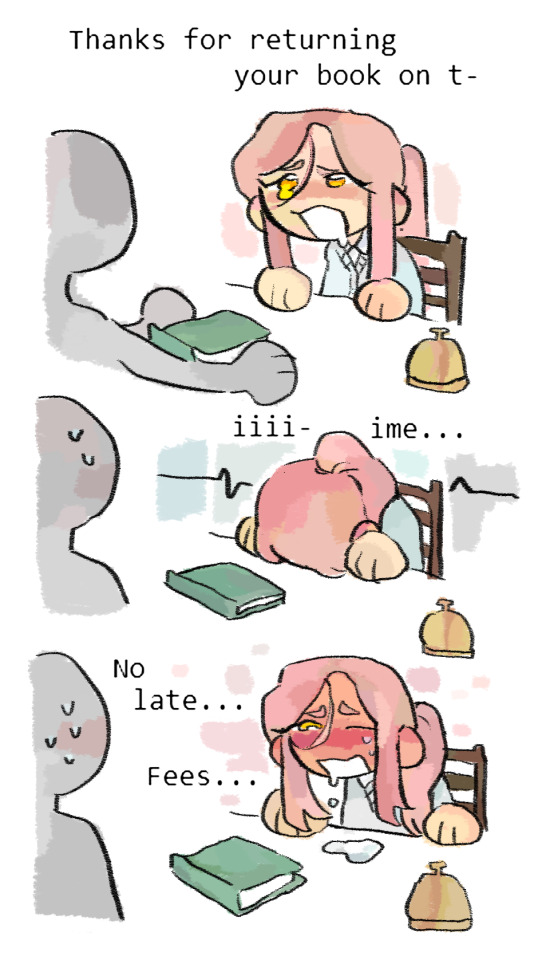
SYDNEY!!!!!!!!!!!!!!!!!!!!!!!!!!!!!!!!!!!!!!!!!!!!!!!!!!!!!!!!!!!!!!!!!!!!!!!!!!!!!!!!!!!!!!!!!!!!!!!!!!!!!!!!!!!!
#my art#dol#sydney the faithful#sydney the fallen#sydney FUN FACT. is my second favorite forever and ever and ever#i literally have not gone on anyone elses routes. im committed. we go to the temple together every day. and were promised to each other. an#i have NOT however. dyed his hair because i think strawberry blonde is cute LMAO#i did get him contacts though because i feel bad. his glasses are breaking every 5 minutes#but thank you to the people who were like ROOTS!!!!!!!!!!!!!! TRUE!!!!!!!!!!!!!!!!!!!!!!!!!!!!!!!!!!!!!!!!!!! on my first post#love you so much
889 notes
·
View notes